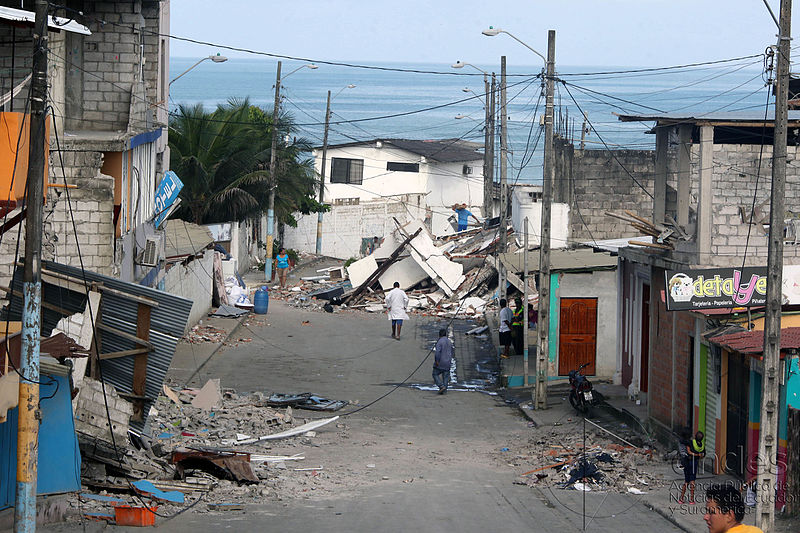International Cooperation on Natural Disasters is Just as Crucial as That on Terrorism
BY UPAMANYU LAHIRI

Last month there was a devastating earthquake in Ecuador that killed almost 700 people. The country’s Pacific coast, particularly the Manabi Province was among the worst affected. The recent earthquake was the worst Ecuador has suffered in nearly three decades. Despite being in one of the most earthquake-prone regions in the world, Ecuador remains woefully under-prepared for such disasters, both in terms of earthquake-resistant infrastructure and relief mechanisms. This was evidenced when the government hiked taxes on people to pay for relief efforts. The disaster could not have come at a worse time for the oil-rich South American country whose economy is already slated to shrink 2% this year due to falling oil prices.
The Ecuadorian earthquake is just the latest example of the destructive trail on human life and infrastructure that natural disasters leave, particularly in developing countries which may take years to recover. As recently as last year there was a massive earthquake in Nepal that killed over 8,000 people and led to damages worth $10 billion, a staggering 50% of the country’s GDP. Of course the most devastating in recent times was the Haiti earthquake of 2010, from which the Caribbean nation is still recovering.
While we are ever wary of the threat of terrorism posed by organizations such as ISIS and other extremist groups, we seem strangely indifferent to the threat of natural disasters even though the latter kills significantly more people when it does strike. Today, in the age of climate change when such natural disasters are expected to occur with ever increasing frequency, it is crucial now more than ever for countries to cooperate on the matter. Many countries do cooperate when such disasters strike by sending international aid and supplies to assist with rescue and rebuilding efforts. As commendable as such actions are, one cannot help but wonder why such action comes after most of the damage is done. Just as countries cooperate on counterterrorism and intelligence sharing to pre-empt terror attacks, so too must they cooperate to share information on impending natural disasters. Of course not all natural disasters can be anticipated, but if countries know in advance of an impending event like a cyclone, tsunami or flood, they can prepare themselves to reduce the likely damage.
Developed countries, like the United States, need to take the lead in this matter as they have the relevant technology in terms of satellites and other sophisticated machinery. Unlike relief supplies which may cost the donor nation millions of dollars, communication of technological monitoring data only involves sharing information, which could ultimately lead to an invaluable number of lives saved. For example, Odisha, one of the poorest states in India, was hit by a deadly cyclone called Paradip in 1999. Totally unprepared and helpless, the state suffered more than 10,000 casualties and $4.5 billion in damages. In 2013, the state was once again hit by a massive super cyclone. However, this time due to better weather predictions, the state was warned in advance. Additionally, learning from its previous experience, this time the government evacuated people in high risk areas before the cyclone hit Odisha. As a result, the number of casualties stood at just over 40. Apart from this, generic preparedness for any disaster is also vital, particularly in developed countries which are most affected by it. We need to increase international cooperation in information sharing, issuing warnings in advance of any untoward weather pattern, and aiding in relief efforts. The attention the world gives to the aftermath of natural disasters is misplaced; truly, for natural disasters, an ounce of prevention is worth a pound of cure.
